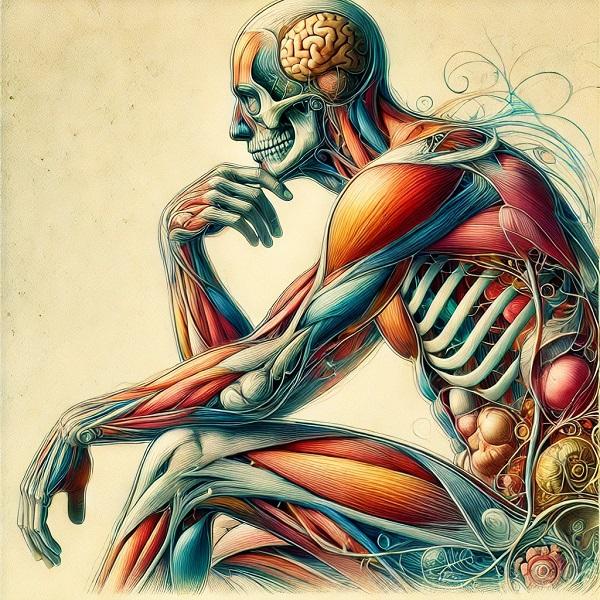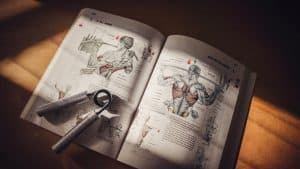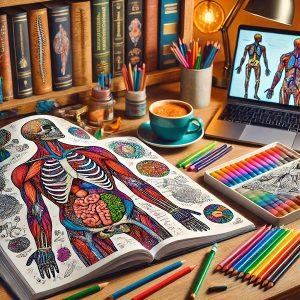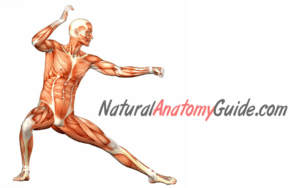
Introduction to Anatomy Art
Anatomy art has a rich history, blending science and creativity to offer a detailed exploration of the human form. Artists have long been fascinated by the structure of the body, creating works that are not only scientifically accurate but also aesthetically captivating. This intersection of art and anatomy provides insights into how our bodies function and showcases the beauty inherent in human physiology.

Historical Perspectives
The roots of anatomy art can be traced back to the Renaissance period when artists like Leonardo da Vinci and Andreas Vesalius began to study human dissection. Their meticulous drawings and notes paved the way for modern anatomy studies. Da Vinci’s sketches are renowned for their precision, capturing muscles, bones, and organs with an artist’s eye for detail. Vesalius’s work, “De Humani Corporis Fabrica,” revolutionized anatomical understanding with its detailed illustrations and remains a cornerstone of anatomical literature.
Modern Anatomy Art
Today, anatomy art has evolved, incorporating various styles and mediums. Artists use digital tools, sculpture, and traditional painting to depict the human body. Contemporary anatomical artists like Jason Freeny and Danny Quirk use their skills to create pieces that are both educational and visually striking. Freeny’s playful sculptures often feature dissected characters, blending whimsy with anatomical accuracy, while Quirk’s hyper-realistic paintings use body painting to reveal the layers beneath our skin.
Educational Value
Anatomy art serves as a crucial educational tool. Medical students and professionals benefit from these artistic depictions, which often simplify complex structures into understandable visuals. Detailed anatomical illustrations are used in textbooks, medical journals, and classrooms worldwide, aiding in the teaching of anatomy and physiology. These artworks help bridge the gap between theoretical knowledge and practical understanding.
Artistic Techniques in Anatomy Art
Creating anatomy art requires a blend of artistic skill and scientific knowledge. Artists must understand human anatomy deeply, often studying cadavers or using medical imaging to ensure accuracy. Techniques vary widely; some artists prefer realistic depictions, focusing on intricate details of muscles and bones, while others adopt a more abstract approach, emphasizing form and movement. Regardless of style, the goal remains to highlight the complexity and beauty of the human body.
Inspirational Anatomy Artworks
Several iconic pieces exemplify the power of anatomy art. Da Vinci’s “Vitruvian Man” stands out as a symbol of the unity of art and science. This drawing, based on the correlations of ideal human proportions, remains a testament to the enduring appeal of anatomical studies. More contemporary works, like Gunther von Hagens’ “Body Worlds” exhibition, use plastination to preserve real human bodies, offering an unprecedented view into our inner workings.
Anatomy Art in Popular Culture
Anatomy art extends beyond the medical and academic fields, influencing popular culture. Tattoos, for example, often feature anatomical elements, blending art with personal expression. Television shows and movies use detailed anatomical illustrations to educate viewers or enhance storytelling, as seen in series like “Grey’s Anatomy” and “House.” This integration of anatomy art into everyday media underscores its universal appeal and relevance.
The Future of Anatomy Art
The future of anatomy art looks promising with advancements in technology. Virtual reality (VR) and augmented reality (AR) are beginning to play a role in anatomical education and art. These technologies allow for immersive experiences, where users can explore the human body in three dimensions, interacting with different anatomical structures. As these tools become more accessible, they will likely revolutionize how we understand and appreciate human anatomy.
Conclusion
Anatomy art is a unique blend of science and creativity, offering invaluable insights into the human body. From the meticulous sketches of Renaissance masters to modern digital creations, this art form continues to evolve, educating and inspiring audiences worldwide. Whether used for medical education or personal appreciation, anatomy art highlights the intricate beauty of our bodies, reminding us of the complexity and elegance inherent in human life.




